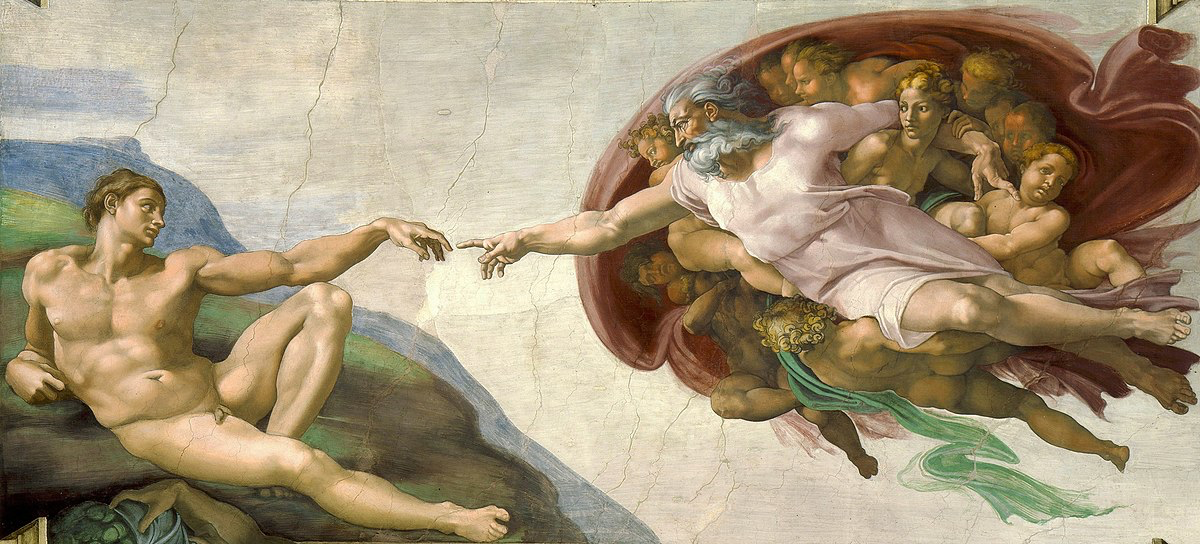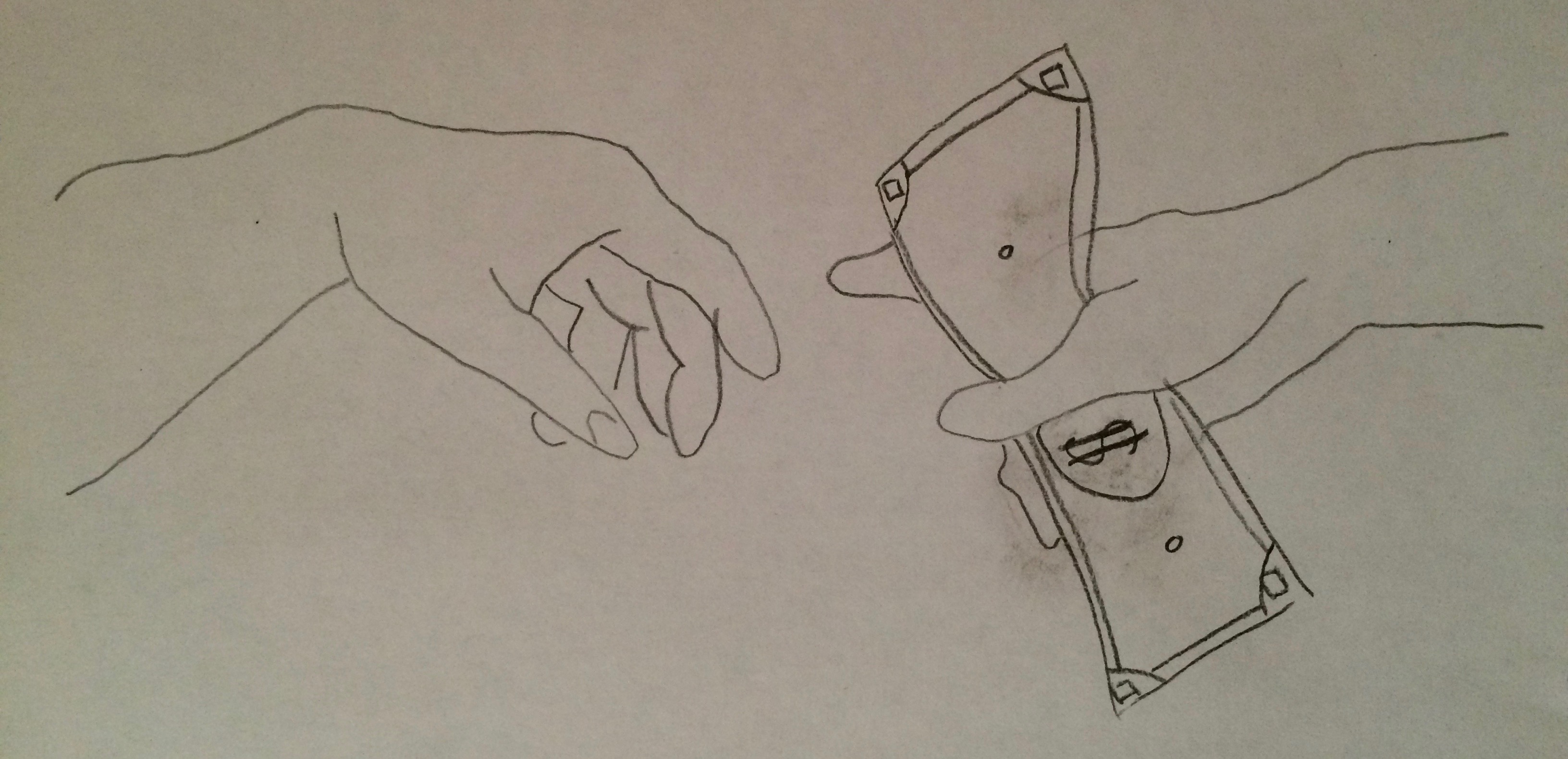The history of art is the history of intellectual appropriation and reinterpretation. No work exists in a vacuum and can be truly original; a quote commonly attributed to Picasso states that “good artists borrow, great artists steal”. In this assignment, we take one of the most famous paintings of all time, The Creation of Adam, and try to reinterpret Michelangelo’s ideas in a modern context.

The Creation of Adam is one of the most reproduced paintings in history (Katz, 2009). It was commissioned by the Vatican and currently forms the central panel on the Sistine Chapel ceiling. God, portrayed as an older bearded man, passes the spark of life to the first human Adam.

In the 21st century, the central role of religion has been dethroned by capitalism. The hand positions of the original painting have been recreated to depict an ordinary exchange of money dependent on our mutual belief in its value.
Some modern art critics interpret Michelangelo’s famous art piece through a different lens. They believe the shapes behind God in the fresco were painted specifically to resemble a human brain (Meshberger, 1990). Thus, Michelangelo depicted the invention of God by the human mind. Perception creates reality. Nothing has any inherent value but depends on the value we assign to it. In the modern world, the primacy of religion has been usurped by capitalism. We believe in the free market, demand and supply, and profit above all. Instead of the Church, we are indoctrinated by social media, television, advertising. Forces solely motivated by the pursuit of profit. We invented money, and we let it dictate our choices in life, just like we invented God. The thematic connection between The Creation of Adam and The Creation of Money is humans creating their own object of worship.
In the original painting, God extends his finger to Adam and imparts the spark of life onto him. My piece is a simplistic close-up and recreation of their hands, but instead of capturing the genesis of humankind, it shows an anonymous exchange of money. This mundane transaction is repeated millions of times every day. For the sake of having enough money for various daily transactions like these, we devote most of our lives to work.
The Creation of Adam is a fresco painting painted on the ceiling of the Sistine Chapel. Viewers throw their heads back and gaze with awe at this perfect composition of symmetry and artistic virtue. Michelangelo had been making art for twenty years before he started this fresco. The Creation of Money, however, is a crude pencil drawing on standard A4 paper. Most viewers experience shock at the artist’s lack of technical skills or effort, which speaks to the erosion of the value of art in modern society. Humanities have been dismissed as a waste of time, and it is no longer economically viable to spend years training to gain art skills like Michelangelo’s. Even spending an afternoon painting is a luxury afforded only to the few who do not have to work. School art programs are the first to be defunded in case of a financial crisis. Instead, children are pressured to pursue professions such as programming or finance. Today, most people do not even create art as a hobby, preferring the easy dopamine shortcut of video games or Netflix shows after a full day of work. Society prioritizes activities that either bring money or instant gratification; art, however, while ultimately more fulfilling for the soul, demands time.
In conclusion, The Creation of Money recreates the hand positions from the original Creation of Adam fresco by Michelangelo to capture the collectively-created mythological aspect of money and the replacement of religion by capitalism in the modern world. The piece’s minimal, crude technical execution references the current devaluation of artistic skill as a worthwhile pursuit.
References
Katz, J. (2009). The measure of genius: Michelangelo’s Sistine Chapel at 500. Smithsonian Magazine.
Meshberger, F. L. (1990). An interpretation of Michelangelo’s Creation of Adam based on neuroanatomy. JaMa, 264(14), 1837-1841.